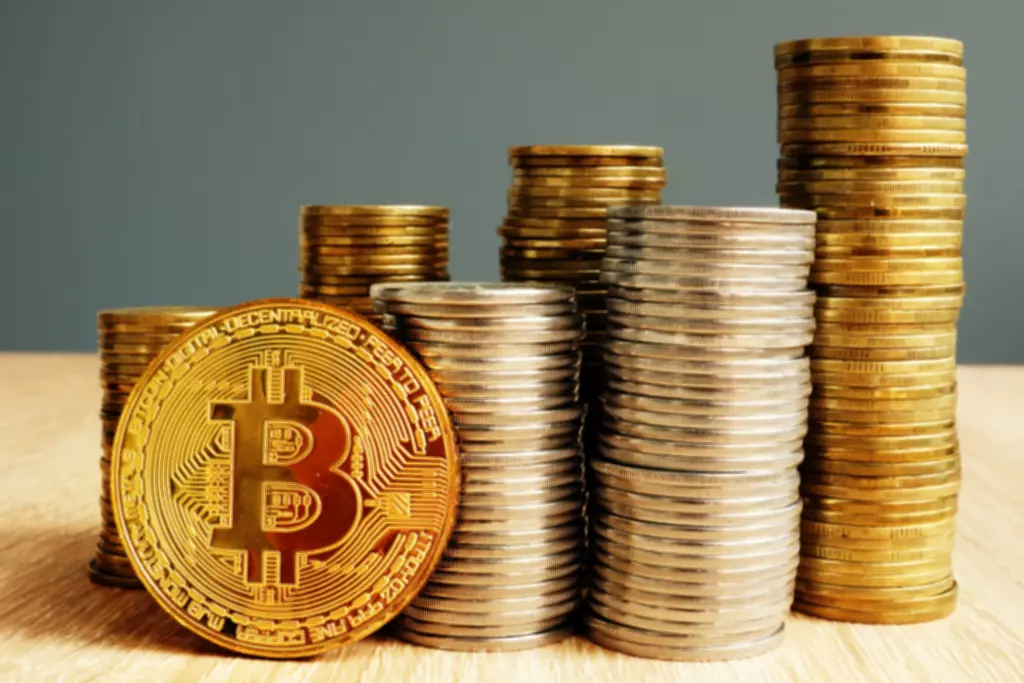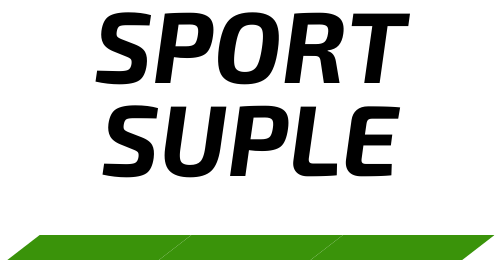Содержание
- Key Benefits Of Defi For Businesses
- Lending And Borrowing Platforms
- How To Overcome Smart Contract Limitations
- Machu Picchu: The Blockchain For A System Architect Or An It Executive
- Predicting Market
- Getting Your Mortgage Via Defi
- What Is Decentralized Finance Defi?
- How Does Defi Challenge Traditional Banking?
That’s certainly an area that the regulators are looking at because there have been plenty of examples in the cryptocurrency world where this has happened. Decentralized finance sidesteps the traditional pathways to making financial transactions. A stablecoin is a cryptocurrency that matches its value with a fiat currency.
- In DeFi, think of them as counterparts to centralized financial institutions.
- In addition to this impressive interest, savers also get Comp tokens.
- New financial instruments and digital assets can be built rapidly by taking advantage of the highly programmable smart contracts and their automated execution, which helps run everything smoothly.
- DeFi users can enjoy custody of their assets using non-custodial crypto wallets or via smart contract-based escrow.
- Blockchain Council is an authoritative group of subject experts and enthusiasts who evangelize blockchain research and development, use cases and products and knowledge for a better world.
- Composability — the ability for DeFi applications and protocols to interact with one another in a permissionless way — is a useful feature that helps DeFi applications evolve.
- The market demand for DeFi is becoming more prominent with each passing day.
Technically, DeFi employs automatically enforceable agreements or smart contracts built on blockchain technology to provide banking services without involving intermediaries such as banks or lawyers. According to professor Ibáñez, decentralized finance "works with DeFi backing but has the same legal effect as traditional finance contracts." While decentralized lending and borrowing protocols have emerged and grown substantially, so have the more traditional centralized services built on top of crypto capital markets.
Key Benefits Of Defi For Businesses
They are crypto assets usually pegged to real-world assets that are easily digitally transferable. As cryptocurrency prices can fluctuate rapidly at times, decentralized stablecoins could be adopted for everyday use as digital currencies that are not issued and monitored by a central authority. DeFi is a collective term for financial products and services that are accessible to anyone who can use Ethereum – anyone with an internet connection.
By the end of every month, one participant wins all the interests and everyone else gets their initially made deposits back. Now that you are aware of the benefits of DeFi, let’s move further to know how to use DeFi along with its real-world applications. We seamlessly integrate continuous development, testing and deployment to release quality solutions quickly. To the best of our knowledge, all content is accurate as of the date posted, though offers contained herein may no longer be available. The opinions expressed are the author’s alone and have not been provided, approved, or otherwise endorsed by our partners.
DeFi pros and cons discussions would also show that majority of DeFi solutions run on Ethereum. Ethereum is the second-largest blockchain protocol, and its permissionless nature ensures that it is highly decentralized in nature. The DeFi movement aims at introducing various benefits for customers and investors. Some of the notable advantages of DeFi would include the elimination of intermediaries alongside centralized control. As DeFi disrupts the financial services industry, governing bodies are scrambling to decide who has the jurisdiction to regulate this new field and what those regulations might be. Depending on implementation, DeFi’s rapid growth could see a slowdown in the coming years.

These requirements vastly restrict who is eligible for many types of DeFi loans. When we say that blockchain is distributed, that means all parties using a DeFi application have an identical copy of the public ledger, which records each and every transaction in encrypted code. That secures the system by providing users with anonymity, plus verification of payments and Open Finance VS Decentralized Finance a record of asset ownership that’s impossible to alter by fraudulent activity. Bankrate is compensated in exchange for featured placement of sponsored products and services, or your clicking on links posted on this website. This compensation may impact how, where and in what order products appear. Bankrate.com does not include all companies or all available products.
Lending And Borrowing Platforms
The aggregation layer, which consists of aggregators that connect the various dApps and protocols which make up the foundation for borrowing, lending on and other financial services. One of the most attractive parts of DeFi for people is that it eliminates the barrier to entry for many of these financial transactions. You no longer have a government or corporation manage your money or need to qualify for certain financial products. Decentralized applications, or dApps, like Compound, Dharma, and Aave allow people to use crypto assets like bitcoin as collateral to take out a loan at a competitive interest rate. USDC possesses the largest stablecoin ecosystem in the world, with support from hundreds of applications, wallets, exchanges, payment services, OTC lending desks, and DeFi protocols.
What Would a Financial System Based on Blockchain Look Like? - Walter Bradley Center for Natural and Artificial Intelligence
What Would a Financial System Based on Blockchain Look Like?.
Posted: Wed, 07 Sep 2022 07:00:00 GMT [source]
It is rare to see an entire sector transforming so fast in such a short time and that too from scratch. It has shown the world how lending can be an interesting concept by empowering both the consumer and the lender. Compound gives users the ability to lend their cryptocurrency out to other users without any intermediaries. In return, the lenders earn interest, which is also in crypto assets form. From an investment perspective, lenders and borrowers are matched as per smart contracts making it a far safer process than today’s lending scene.
How To Overcome Smart Contract Limitations
Financial data is among the most sensitive information in the world. Using DeFi, data can be stored on hundreds or thousands of different nodes, which prevents hackers from attacking or breaking into the system to gain control. (This is one of the major advantages of blockchain technology in general.) Consensus protocols prevent any one participant in a DeFi system from harming the entire network. Compare this to a bank, where a hacker, or even an employee, could access and misuse your data -- or your money. DeFi tools have fewer barriers to entry than traditional systems. If they do require Know-Your-Customer information, it might be stored more securely using blockchain tools.
Thus, DeFi transforms the industry through both the essence and conduct . That is, the DeFi landscape creates a new infrastructure where it can deliver similar financial products and services. Planet Compliance is a marketplace where institutions and corporates can discover RegTech and LegalTech solutions.
DeFi has been called the "wild west" of the cryptocurrency world. It's an unregulated financial system that many believe will revolutionize the way we conduct financial transactions. Yield farming refers to placing crypto assets into DeFi protocols to generate the highest returns possible. For example, a person may deposit RAY-USDC into Raydium’s yield farm to earn interest in Raydium’s native token, RAY. Yield farming can take various forms, with the most common being depositing funds in high-yielding lending protocols. Compound and Dharma are two examples of the convergence of fintech and crypto, where crypto-native applications enable simple savings solutions.
Machu Picchu: The Blockchain For A System Architect Or An It Executive
For example, a borrower can only borrow up to 70% of their Bitcoin’s value since it is a volatile asset, whereas borrowers can receive up to 80% of the value of their Ethereum. The latest yield farming trend that emerged during "DeFi Summer" was the concept of liquidity mining. The DeFi movement is arguably one of the most promising markets in the financial technology sector, but that does not mean it is not without its challenges. Some of the features that we expect to see in the future of DeFi are actually already possible thanks to market-leading applications such as Dharma, Aave, Compound, Yearn Finance, and more. Conversely, a merchant in India who is concerned about inflation could place funds into a yield-generating protocol that earns a higher APR than India’s prevailing inflation rate. As the DeFi market continues to grow, new protocols are created to address new market needs as well as build innovative, new models for financial contracts.

Liquidity pools to facilitate trading without directly needing a counterparty to match your trade. Nodes, making censorship or the potential shutdown of a service a complicated undertaking. A contract that's designed to hand out an allowance or pocket money could be programmed to send money from Account A to Account B every Friday. And it will only ever do that as long as Account A has the required funds. No one can change the contract and add Account C as a recipient to steal funds.
Decentralized finance uses the blockchain technology that cryptocurrencies use. Applications called dApps are used to handle transactions and run the blockchain. With the help of immutability, it is practically impossible to manipulate any record on the blockchain network. In addition to the features of decentralization, immutability offers the promising assurance of security.
Predicting Market
With the rise of digital assets, the financial market experienced an exponential movement that overturned some traditional financial ways. In a nutshell, DeFi is a system that uses the traditional financial system but uses smart contracts in place of intermediaries. So, it is safe to say that the decentralized DeFi project annexes the traditional financial system and blockchain technology. https://xcritical.com/ Digital assets are subject to a number of risks, including price volatility. Transacting in digital assets could result in significant losses and may not be suitable for some consumers. Digital asset markets and exchanges are not regulated with the same controls or customer protections available with other forms of financial products and are subject to an evolving regulatory environment.

Online forums, messengers, and websites can help you learn about new opportunities. However, you need to be extremely careful with any information you find. Always be cautious and double-check the safety of any project you read or hear about. If you take part in crypto loans or any other kind of lending, you’re at risk of the counterparty not repaying their debt. DeFi applications transfer the responsibility from the intermediaries to the user. Designing products that minimize the risk of user error is a tough challenge when the products are deployed on top of immutable blockchains.
Unlike traditional centralized exchanges , DEXs ensure direct peer-to-peer cryptocurrency transactions, relying on self-executing smart contracts to facilitate trading. This allows for instantaneous trades, often at a lower cost than on CEXs. DeFi protocols are groups of smart contracts that work together to create a certain solution and execute specific tasks.
Getting Your Mortgage Via Defi
The third piece of DeFi is that services are open, programmable and composable. What that means is that all of these are just software components that are running on a blockchain network. So it’s easy to add in additional functionality or to combine functions from different services because everything is running on a standardized software environment. For more on decentralized finance , register for the Decentralized Finance for Investment Professionals online course from CFA Institute. However, the collapse of TerraUSD in early May and other turmoil in the stablecoin market has highlighted that these digital assets are not as secure and stable as the name suggests. Trades are executed autonomously, with the terms and process guided by smart contracts.
Those who are looking to get started in DeFi, beyond the basics of cryptocurrency trading, should proceed carefully and be sure that they work with a reliable counterparty. Though the yields offered by DeFi are enticing, don’t let the potential return blind you to the other risks. A downdraft in cryptocurrency markets could quickly wipe out any small gains from yield farming, and outright scams or theft could wipe out your crypto wealth even faster. One currently popular benefit for cryptocurrency investors is the ability to generate income.
How Does Defi Challenge Traditional Banking?
Therefore, developers must ensure their smart contracts go through various audit levels. In contrast, cumbersome barriers to entry have made it improbable for the traditional finance system to embrace the emerging trend. The fact that one must obtain proper licenses and authorization from regulators has limited innovation around the traditional finance systems. Accessibility, security, autonomy, and profitability are obviously exciting aspects of DeFi. However, there are serious drawbacks with DeFi, especially because it is still in its infancy.
The blocks are "chained" together through the information in each proceeding block, giving it the name blockchain. Information in previous blocks cannot be changed without affecting the following blocks, so there is no way to alter a blockchain. This concept, along with other security protocols, provides the secure nature of a blockchain. Wherever there is an internet connection, individuals can lend, trade, and borrow using software that records and verifies financial actions in distributed financial databases. A distributed database is accessible across various locations as it collects and aggregates data from all users and uses a consensus mechanism to verify it.
Popular savings apps include Argent, Dharma, and PoolTogether, a no-loss savings game in which participants get all their money back, whether or not they win. With the introduction of ‘Automated Market Making,’ the Uniswap platform changed the way users trade. The innovative smart contract mechanism allows instantaneous settlement between parties. The live rates offered to the traders help execute trades with confidence unlike other traditional types of trades. The ‘Pooling’ feature further allows the users to earn interest via lending without any third-party involvement.
Right now, most cryptocurrency investors use centralized exchanges like Coinbase or Gemini. DEXs facilitate peer-to-peer financial transactions and let users retain control over their money. The goal of DeFi is to provide many of the financial services that customers and businesses currently enjoy — loans, interest on deposits, payments — but to use decentralized technology to do so. In effect, DeFi changes the industry not so much by changing the what but rather the how. That is, DeFi creates new infrastructure to deliver similar financial products and services.
Arguably, the easiest and safest way to do that is to tokenize US dollars into USDC, which can then be used to deposit into DeFi protocols. The next step in the DeFi movement was the creation of yield-generation savings protocols in late 2018, with Compound Protocol as the frontrunner. In the following twelve months, numerous new lending and borrowing applications emerged as well as new types of decentralized financial applications.
With a proper audit trail, DeFi applications could make it easier to identify who made changes to a transaction, at what point of time, and in which way. As a result, there would be little left to compromise the integrity of financial ecosystems. A DAO is a decentralized autonomous organization that cooperates according to transparent rules encoded on the Ethereum blockchain, eliminating the need for a centralized, administrative entity.
